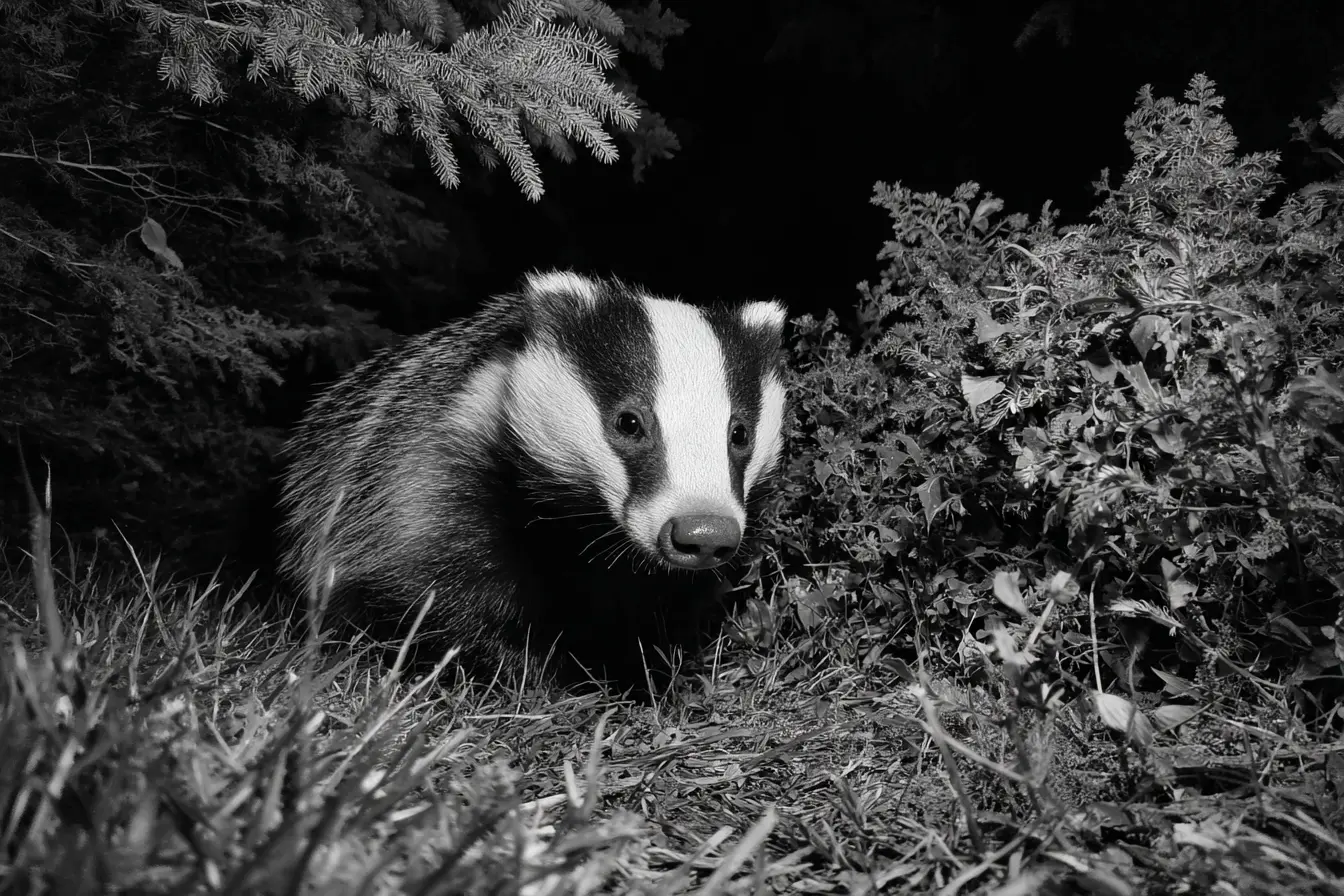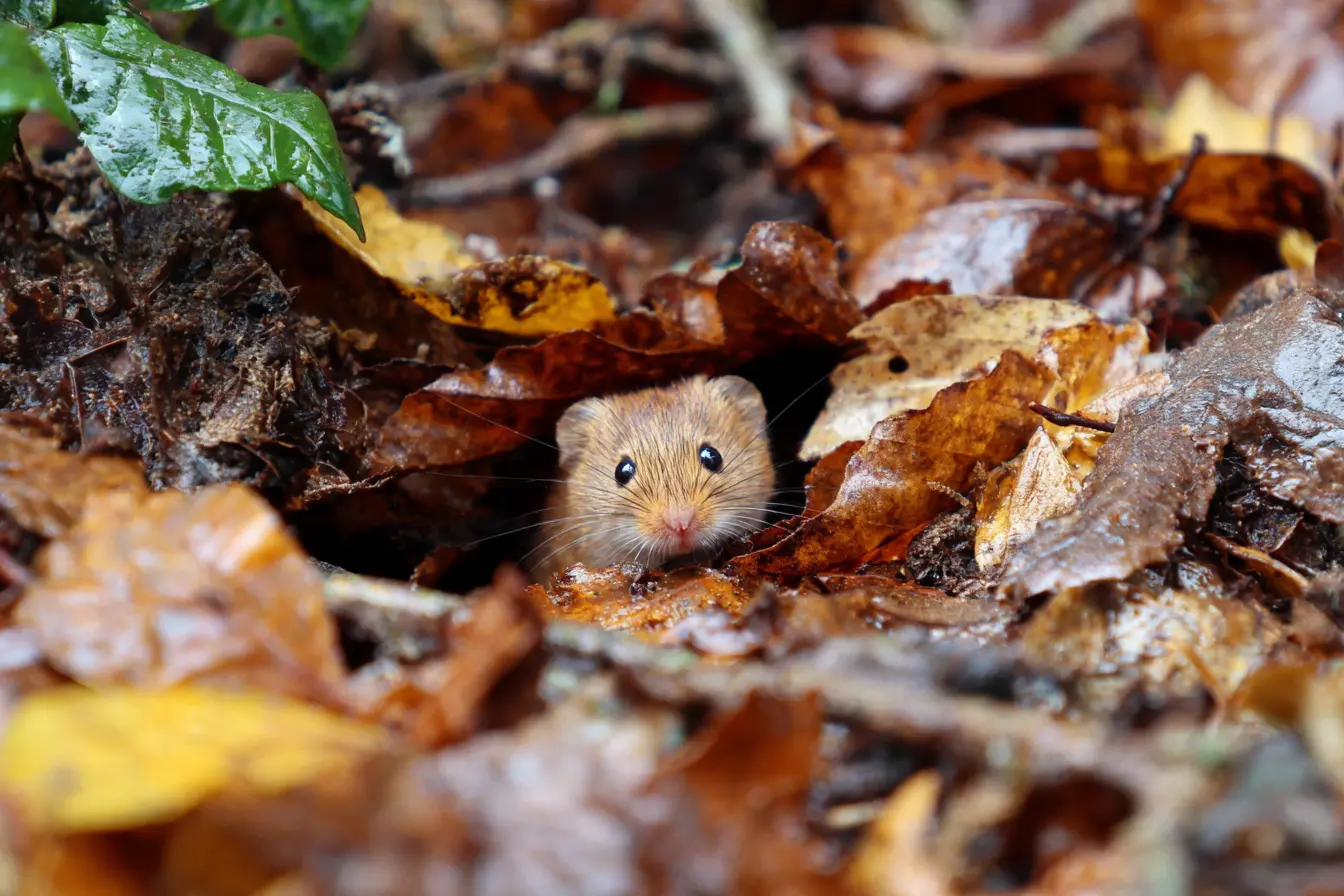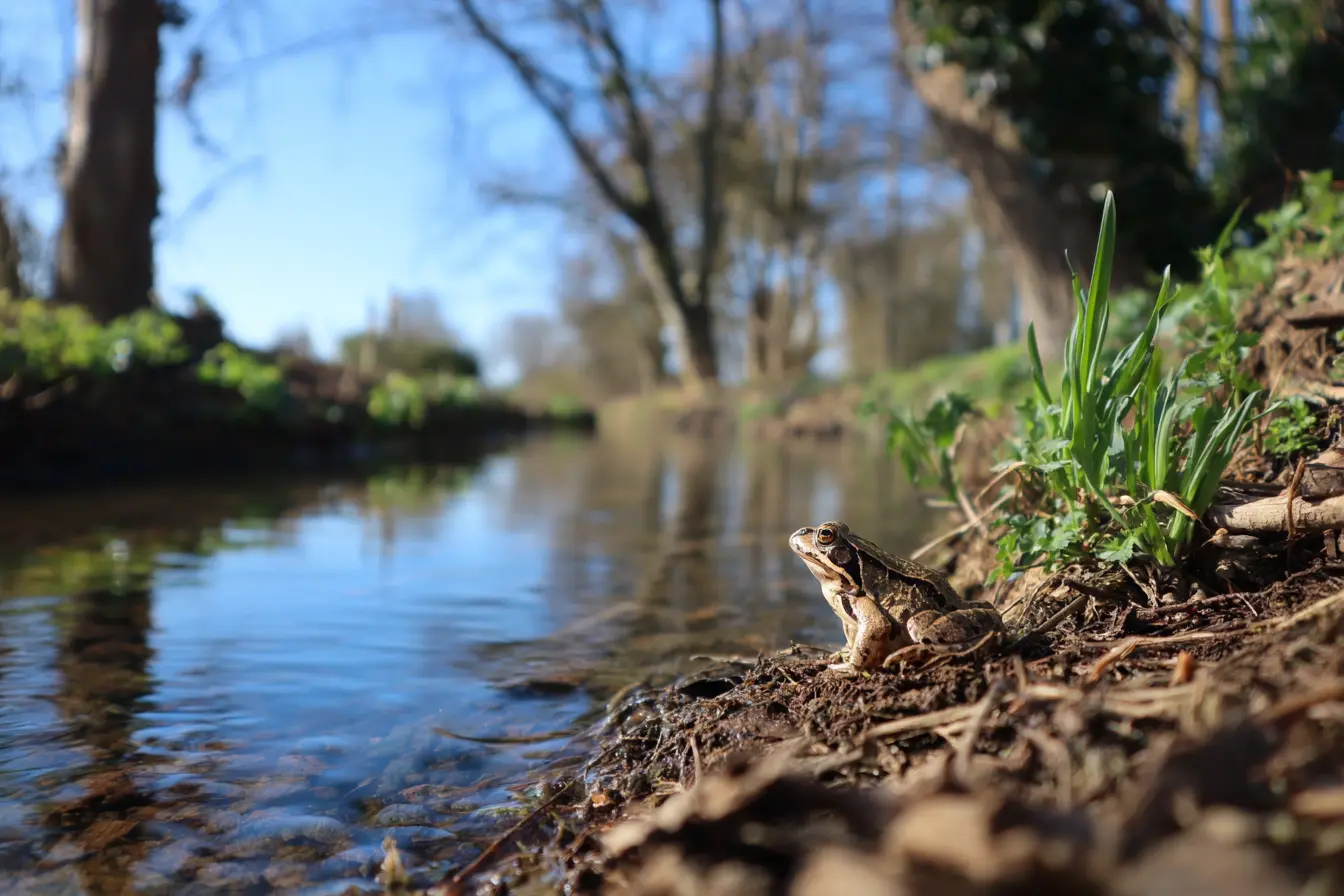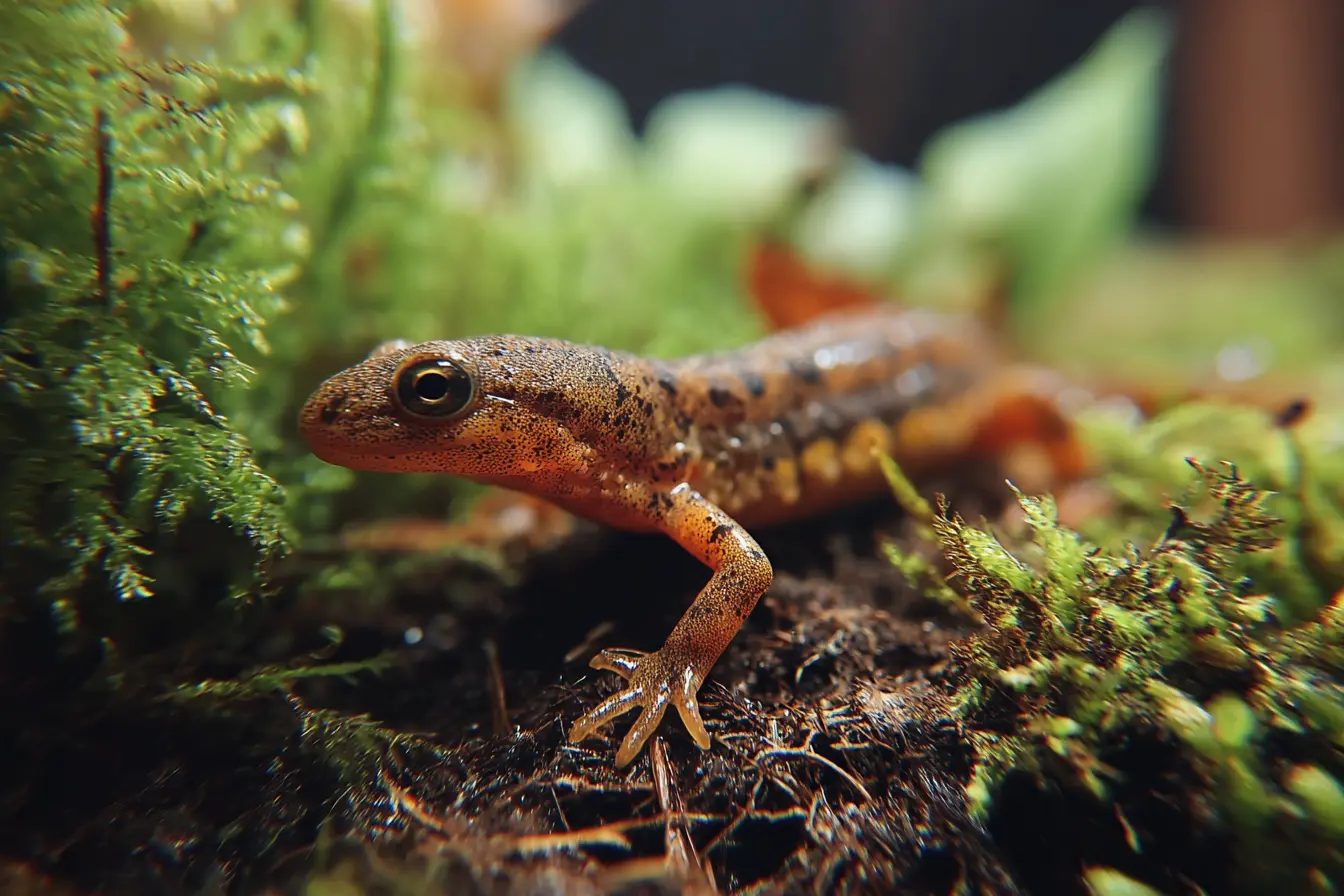
Badgers in the UK
The badger (Meles meles) is one of the most recognisable and iconic wild mammals in the UK. With their distinctive black-and-white striped faces and powerful, stocky bodies, badgers are an integral part of British woodland and countryside ecosystems. Despite their elusive nocturnal habits, they are widely distributed and often leave clear signs of their presence.
This blog post offers a comprehensive overview of badgers in the UK, covering their identification, behaviour, habitat, diet, reproduction, threats, conservation status, and how to observe them responsibly in the wild.
Identification and Appearance
Badgers are members of the mustelid family, which also includes weasels, otters and stoats. They are the largest land carnivores in the UK.
Key features
- Size: Adult badgers typically weigh 8 to 12 kilograms and measure 60 to 80 centimetres in length.
- Fur: Greyish body fur with a white face and bold black stripes running from nose to ears.
- Build: Stout, muscular build with short legs and powerful claws for digging.
- Tail: Short and bushy, usually around 12 to 20 centimetres long.
Badgers have poor eyesight but an excellent sense of smell and hearing. Their strong front claws make them expert diggers.
Distribution and Habitat
Badgers are found across most of mainland Britain, including England, Wales and parts of Scotland. They are absent from most of Ireland except in the southeast.
Preferred habitats
- Mixed and deciduous woodland
- Farmland with hedgerows
- Scrubland and pasture
- Urban parks and golf courses
Badgers construct elaborate underground burrows called setts, often used for generations. Setts are typically built on well-drained slopes with easy access to food.
Behaviour and Lifestyle
Badgers are social animals, living in family groups known as clans. They are mainly nocturnal and emerge from their setts at dusk.
Setts and territory
A single clan may use multiple setts across a territory of 30 to 150 hectares. Main setts are large and complex, with several entrances and chambers.
Badgers mark territory with faeces in latrines and through scent glands.
Social structure
Groups usually consist of a dominant breeding pair and their offspring. Badgers groom each other and share duties like digging and maintaining the sett.
Diet and Foraging
Badgers are omnivores with a varied diet, though they show a strong preference for certain foods.
Common food sources
- Earthworms (a major food source)
- Beetles, grubs and insects
- Small mammals and birds
- Fruits and berries
- Roots, bulbs and cereals
- Carrion and fungi
A single badger may eat hundreds of earthworms in a night. Foraging paths, snuffle holes, and overturned vegetation are signs of their nocturnal feeding.
Reproduction and Life Cycle
Badgers breed once a year, but display a unique adaptation known as delayed implantation. Fertilised eggs remain dormant until conditions are suitable.
Breeding facts
- Mating season: Mainly spring and summer
- Implantation: Delayed until late autumn
- Birth: Usually January to March
- Litter size: Typically 1 to 5 cubs
- Emergence: Cubs emerge from the sett around 8 weeks old
- Maturity: Badgers can breed from around 1 year of age
Cubs stay close to the sett for several months before joining adults on foraging trips.
Predators and Threats
Adult badgers have few natural predators in the UK, but they face several threats—mainly from humans.
Natural predators
- Golden eagles (in remote Scotland)
- Foxes and dogs (mainly target cubs)
Human-related threats
- Road traffic accidents
- Habitat loss and fragmentation
- Illegal persecution and baiting
- Bovine TB culling and management schemes
Road deaths are the leading cause of badger mortality in many regions.
Conservation Status
Badgers are protected under the Protection of Badgers Act 1992 in the UK. It is illegal to kill, injure or disturb badgers or interfere with their setts without a licence.
Current status
- Classified as Least Concern
- Populations considered stable or increasing in many areas
- Localised declines due to culling and development
Despite legal protection, badgers remain controversial in some rural communities due to their perceived role in transmitting bovine tuberculosis (bTB) to cattle. Culling and vaccination schemes are in place in affected areas.
Badgers versus Other Mustelids
Badgers are sometimes confused with other large mustelids, but their size and striking facial markings make them distinctive.
Differences
- Size: Badgers are far larger than stoats or weasels.
- Colour: Only badgers have the characteristic black-and-white face.
- Behaviour: Badgers are nocturnal and dig large setts; stoats and weasels are more active during the day and use smaller dens.
Importance in the Ecosystem
Badgers help maintain healthy ecosystems through their foraging and digging behaviour.
Ecological roles
- Control insect populations, particularly earthworms and beetles
- Help aerate and fertilise soil through digging
- Create habitats used by other species (e.g. rabbits, foxes and insects) in abandoned setts
- Disperse seeds through consumption of fruit
Their burrowing activity supports soil turnover and biodiversity, especially in woodland ecosystems.
Observing Badgers in the Wild
Due to their nocturnal habits, badgers can be difficult to spot, but they leave distinctive signs.
Tips for observation
- Look for setts on wooded slopes or hedgerows with fresh digging and paw prints
- Use wildlife cameras near active trails and latrines
- Visit reserves or badger hides run by local wildlife groups
- Watch from a distance and remain still and quiet
Never disturb an active sett or shine bright lights directly at badgers.
Conclusion
Badgers are strong, intelligent, and socially complex animals that play a vital role in Britain’s natural landscapes. Though often hidden from view, their presence is felt through their influence on soil health, prey populations, and biodiversity.
Ongoing conservation efforts and responsible countryside management are essential to ensure that badgers continue to thrive across the UK. Whether seen snuffling in a woodland clearing or captured on a trail camera, badgers remain one of the most fascinating and beloved mammals of the British Isles.
Vets near you
Speciality vets
- Aquatics vet specialists
- Birds vet specialists
- Camelids vet specialists
- Cats vet specialists
- Cattle vet specialists
- Deer vet specialists
- Dogs vet specialists
- Equines vet specialists
- Exotic vet specialists
- Goats vet specialists
- Pigs vet specialists
- Poultry vet specialists
- Sheep vet specialists
- Small Mammals vet specialists
- Wild vet specialists



